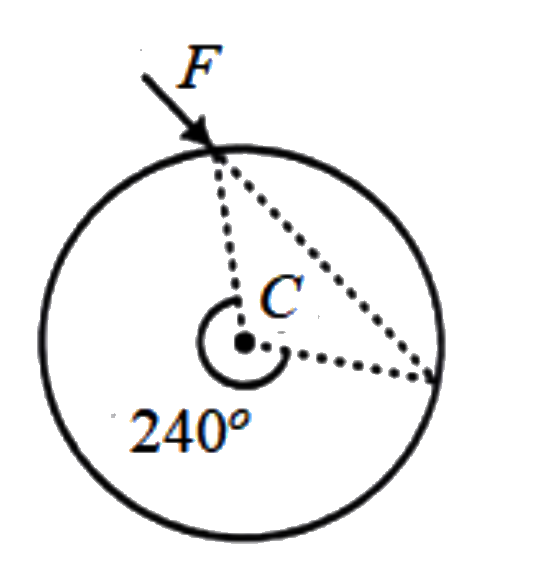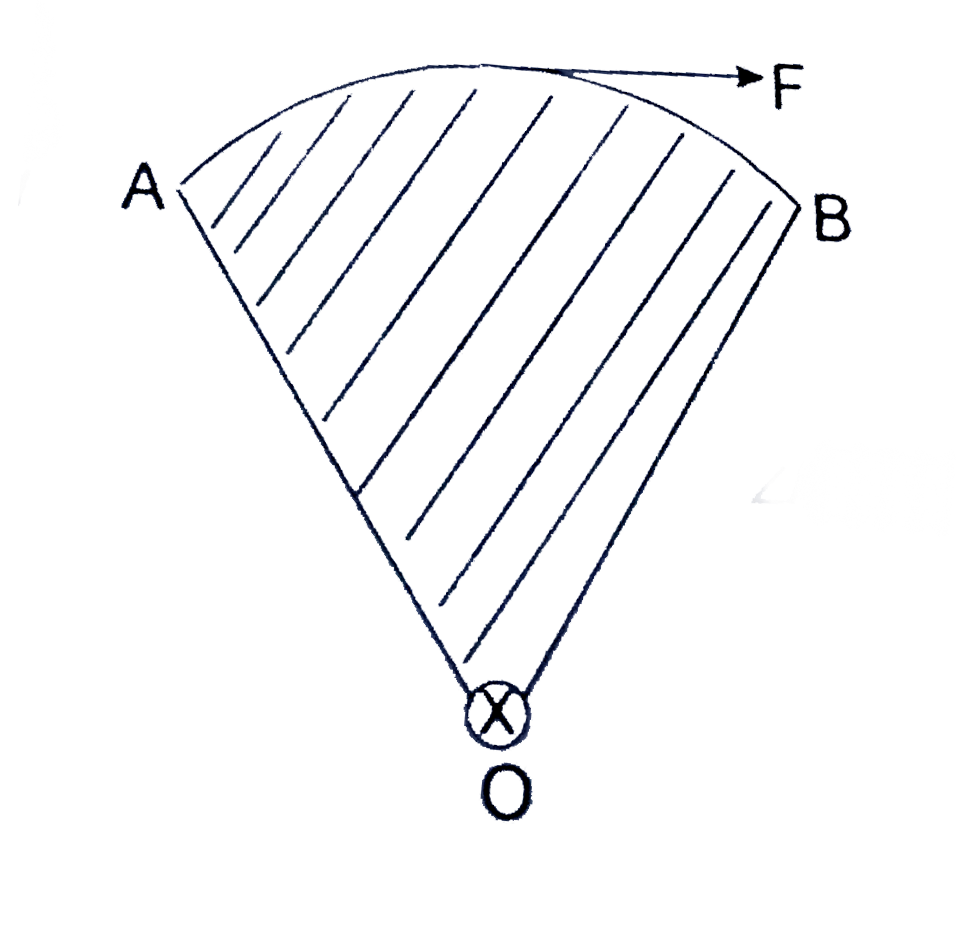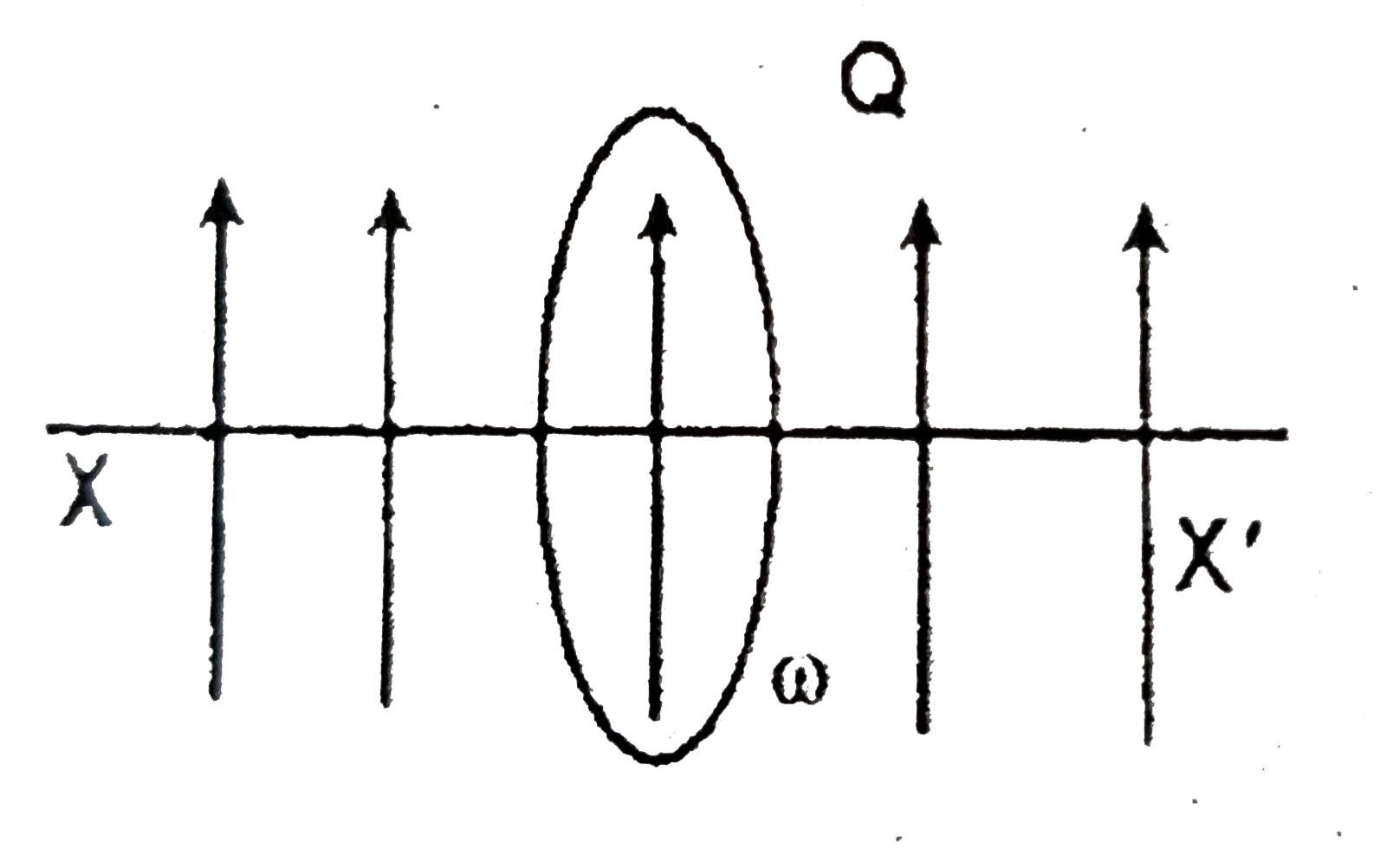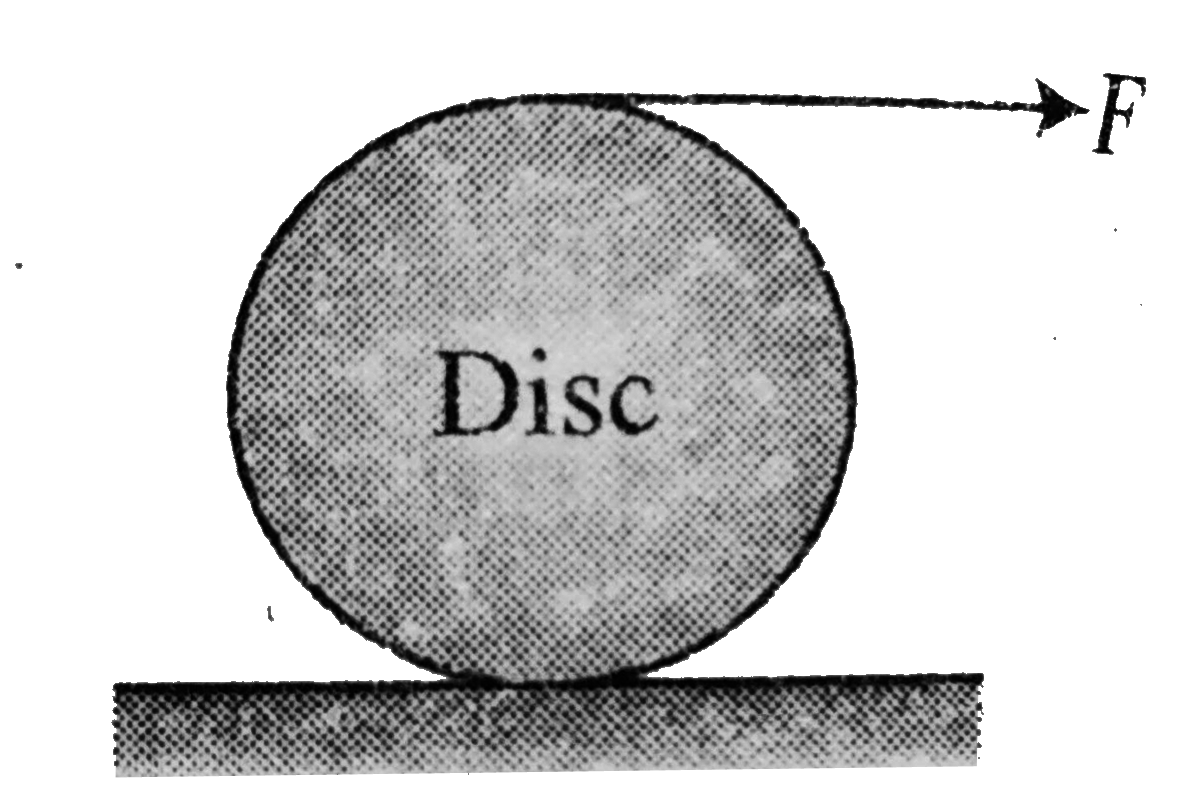Two equal and opposite forces F are allplied tangentially to a uniform disc of mass M and radius R . If the disc is pivoted at its centre and free to rotate in its plane, the angular acceleration of the disc is :
FMR
2F3MR
4FMR
Zero
The correct Answer is:C
To solve the problem of finding the angular acceleration of a uniform disc when two equal and opposite forces F are applied tangentially, we can follow these steps:
Step 1: Understand the Setup
We have a uniform disc of mass M and radius R. Two equal and opposite forces F are applied tangentially to the disc. The disc is pivoted at its center and can rotate freely in its plane.
Step 2: Identify the Torque
The torque τ produced by a force applied tangentially at a distance R from the pivot (the center of the disc) is given by the formula:
τ=F×R
Since there are two forces acting in opposite directions, the total torque τtotal is:
τtotal=F⋅R+F⋅R=2FR
Step 3: Moment of Inertia of the Disc
The moment of inertia I of a uniform disc about its center is given by:
I=12MR2
Step 4: Relate Torque and Angular Acceleration
According to Newton's second law for rotation, the relationship between torque and angular acceleration α is given by:
τ=I⋅α
From this, we can express angular acceleration as:
α=τI
Step 5: Substitute the Values
Now, substituting the values of torque and moment of inertia into the equation for angular acceleration:
α=2FR12MR2
Step 6: Simplify the Expression
Simplifying the expression:
α=2FR⋅2MR2=4FMR
Final Answer
Thus, the angular acceleration α of the disc is:
α=4FMR
We have a uniform disc of mass M and radius R. Two equal and opposite forces F are applied tangentially to the disc. The disc is pivoted at its center and can rotate freely in its plane.
The torque τ produced by a force applied tangentially at a distance R from the pivot (the center of the disc) is given by the formula:
τ=F×R
Since there are two forces acting in opposite directions, the total torque τtotal is:
τtotal=F⋅R+F⋅R=2FR
The moment of inertia I of a uniform disc about its center is given by:
I=12MR2
According to Newton's second law for rotation, the relationship between torque and angular acceleration α is given by:
τ=I⋅α
From this, we can express angular acceleration as:
α=τI
Now, substituting the values of torque and moment of inertia into the equation for angular acceleration:
α=2FR12MR2
Simplifying the expression:
α=2FR⋅2MR2=4FMR
Thus, the angular acceleration α of the disc is:
α=4FMR
Similar Questions
A uniform disc of mass M and radius R is hinged at its centre C . A force F is applied on the disc as shown . At this instant , angular acceleration of the disc is

View SolutionThe moment of inertia of a disc of mass M and radius R about a tangent to its rim in its plane is
View SolutionA force F acts tangentially on a part of a uniform disc of mass 'm' and radius 'R' hinged at point O. The force exerted by hinge on the portion of disc initially.

View SolutionA disc of mass M and Radius R is rolling with an angular speed ω on the horizontal plane. The magnitude of angular momentum of the disc about origin is:
View SolutionIf a tangential force mg is applied to a disc of mass m and radius r, the angular acceleration produced in it is?
View SolutionA disc of mass m has a charge Q distributed on its surface. It is rotating about an XX' with a angular velocity ω. The force acting on the disc is

View SolutionA force F acts tangentially at the highest point of a disc of mass m kept on a rough horizontal plane. If the disc rolls without slipping, the acceleration of centre of the disc is:

View SolutionA disc of radius R is pivoted at its rim. The period for small oscillations about an axis perpendicular to the plane of disc is
View SolutionMoment of inertia of a uniform quarter disc of radius R and mass M about an axis through its centre of mass and perpendicular to its plane is :
View SolutionMoment of inertia of a uniform quarter disc of radius R and mass M about an axis through its centre of mass and perpendicular to its plane is :
View Solution
